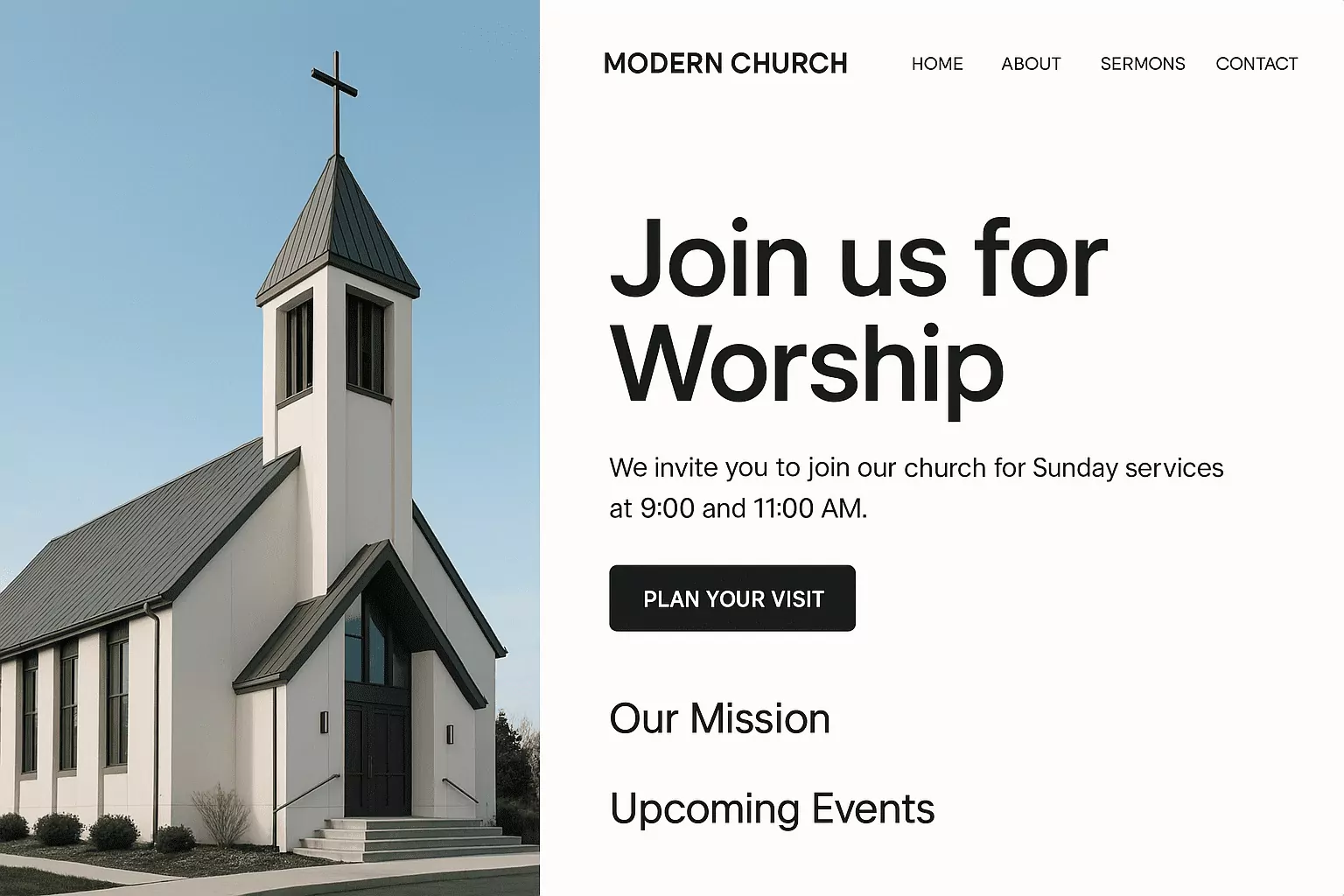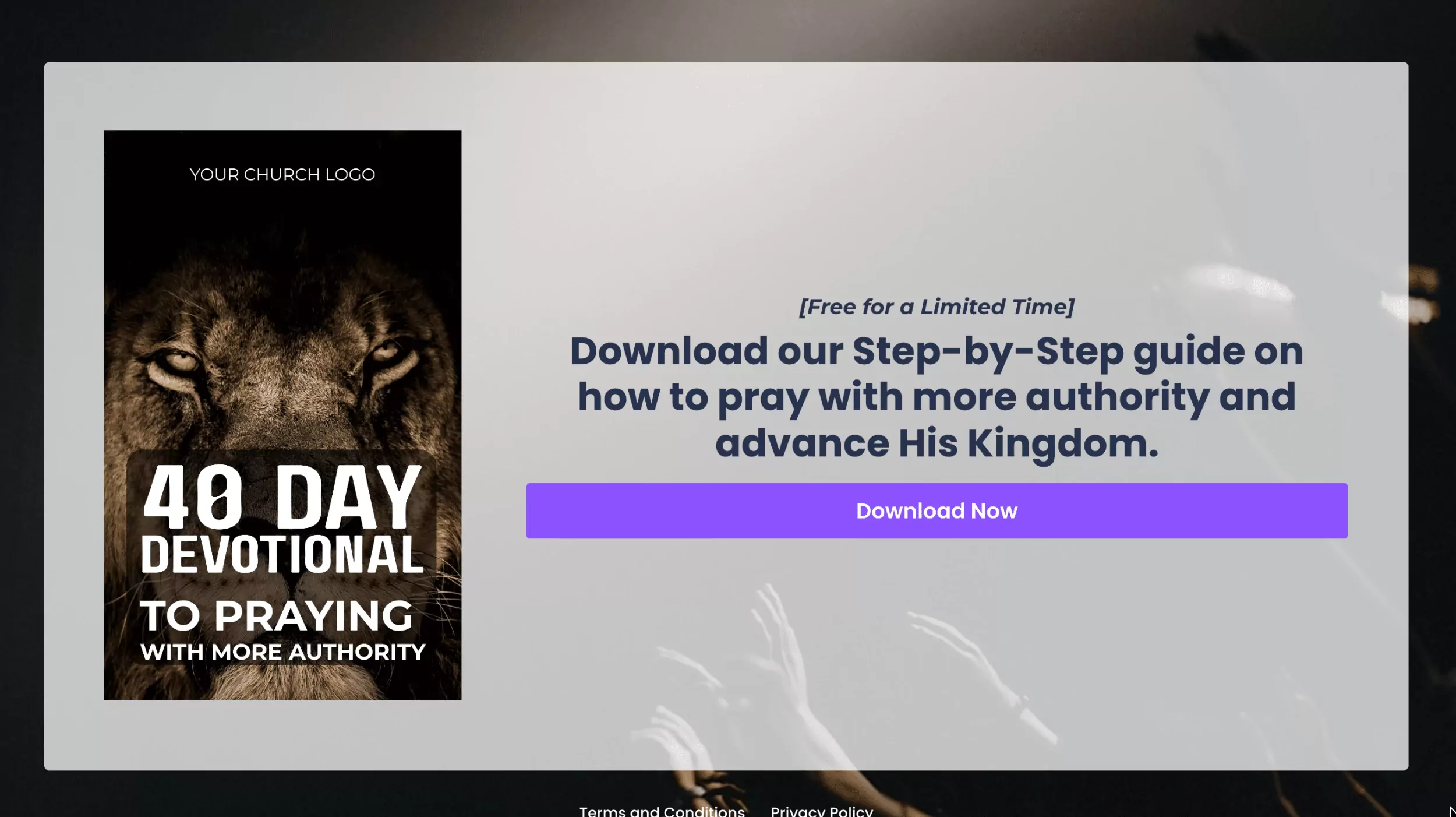Building a Vibrant Online Presence: A Guide for Small Christian Churches

In today’s digital age, every community—even small churches with humble beginnings—has the opportunity to reach and engage its congregation, community, and potential new members. Whether your church has just a few members or is on the cusp of rapid growth, establishing a compelling online presence is vital. This guide will walk you through every step of planning, designing, and launching a website that not only reflects your church’s mission and values but also utilizes proven online marketing and direct-response strategies.
1. Strategic Planning & Branding
Before you even think about design or functionality, it’s important to lay a solid foundation by clearly defining your church’s identity and message.
Define Your Message
At the heart of your online presence is your church’s story. Ask yourself:
What is your church’s mission and core values?
How do you serve your community?
What unique impact does your church have on its members?
Crafting a clear and compelling message is crucial. Your website should immediately communicate who you are and why you matter. For example, consider a tagline that encapsulates your mission, such as “Building Faith, Community, and Hope” or “Serving Christ Through Every Connection.”
Understand Your Target Audience
Knowing who you’re speaking to is key. Your target audience may include:
Current Members: They need easy access to updates, event information, and resources.
Potential Visitors: These are people curious about your church and community.
Local Community Members: Individuals looking for support, outreach programs, or community events.
By tailoring your message to these groups, you can create content that resonates, inviting them to explore more and ultimately become part of your community.
Establish Your Branding Elements
Visual identity is just as important as your message. Consistency in branding builds trust and recognition. Key elements include:
Logo: A simple, memorable logo that represents your church’s ethos.
Color Palette: Choose warm and inviting colors that reflect your church’s personality.
Typography: Use clear and accessible fonts to enhance readability.
Consistency across all channels—from your website to social media—reinforces your message and helps maintain a cohesive community identity.
2. Website Structure & Navigation

A well-organized website makes it easy for visitors to find what they need. The goal is to create a user-friendly experience that guides users naturally to key information and desired actions.
Create a Simple, Intuitive Layout
When designing your website, simplicity is your ally. Avoid clutter and focus on clean design:
Navigation Menus: Organize your menu with clear sections such as Home, About, Ministries, Events, Sermons, Contact, and Give.
Responsive Design: Ensure your site looks great on mobile devices. Many users will access your website via their smartphones or tablets.
Enhance User Experience (UX)
User experience can make or break a website. Consider these key points:
Fast Load Times: Optimize images and site performance so visitors aren’t kept waiting.
Accessibility: Follow ADA guidelines to make sure everyone, including people with disabilities, can navigate your site with ease.
Clear Calls-to-Action (CTAs): Every page should have a clear CTA, whether it’s “Donate Now,” “Join Our Newsletter,” or “Learn More About Our Ministries.”
A smooth navigation and intuitive design ensure that visitors can effortlessly engage with your content and take the next steps toward involvement.
3. Homepage Essentials

The homepage is often the first impression visitors have of your church’s online presence. It needs to capture attention, build trust, and drive action.
Powerful Headlines and Visuals
Your homepage should immediately communicate the heart of your church:
Headlines: Use a compelling headline that encapsulates your church’s mission. For instance, “Welcome to [Church Name]: A Community of Faith, Hope, and Love.”
Subheadlines: Supplement your main headline with a brief description that highlights your church’s unique attributes.
Visuals: High-quality images or videos that show genuine community moments can convey warmth and authenticity. Authentic visuals help visitors connect emotionally with your church’s story.
Engaging Calls-to-Action
Direct-response marketing thrives on clear CTAs. Position them prominently:
Join or Learn More: Buttons like “Join Our Community” or “Learn More About Us” invite visitors to engage deeper.
Donate: A dedicated “Give Today” button should be easily accessible, encouraging both one-time and recurring donations.
Subscribe: Offer newsletter sign-ups to keep visitors informed about upcoming events, sermons, and community news.
Building Social Proof
Trust is essential for small communities. Enhance your credibility by including:
Testimonials: Share stories and endorsements from members who have been positively impacted by your ministry.
Community Stories: Brief video clips or written stories about community events can highlight the church’s impact.
Statistics: If applicable, share numbers that reflect your community’s growth and involvement.
These elements not only reassure visitors of your church’s authenticity but also create a sense of belonging and trust.
4. Content & Messaging Strategy

Your website content should reflect the personality and purpose of your church. It must be both inviting and informative, offering a clear picture of what you stand for and the services you provide.
About & Mission
Create a dedicated “About” section that tells your church’s story:
Historical Background: Share the origins of your church, its growth, and the community it serves.
Mission Statement: Clearly articulate your mission and vision, explaining why your church exists and what it aims to achieve.
Leadership Profiles: Introduce your pastors and key leaders. Personal profiles help humanize your ministry and build connections with visitors.
Ministries & Community Outreach
Highlight the various programs and initiatives that define your church:
Program Details: Describe each ministry or outreach program. Explain what it entails, who it serves, and how community members can get involved.
Volunteer Opportunities: Provide information on how to volunteer, which can motivate both current and new members to participate actively.
Event Calendar: Maintain a regularly updated calendar of upcoming events, classes, and gatherings.
By clearly showcasing your community outreach and ministry efforts, you communicate the depth of your engagement and invite active participation.
Sermons & Educational Resources
Many visitors will be interested in exploring your teachings and spiritual guidance:
Sermon Archives: Offer access to video or audio recordings of sermons. Organize them by date or topic for ease of navigation.
Blogs & Articles: Regularly updated blog posts can provide spiritual insights, community updates, and reflections on faith.
Resource Library: Consider adding downloadable materials such as devotionals, study guides, or prayer resources.
This type of content not only enriches your current members’ spiritual journey but also offers newcomers valuable insights into your church’s teachings.
5. Online Giving & Donation Integration

For many small churches, donations form the backbone of the ministry. Making the donation process as seamless as possible can significantly enhance your fundraising efforts.
Secure Donation Platforms
Integrate a secure, user-friendly online giving solution:
Ease of Use: Ensure that the donation process is straightforward, with options for one-time or recurring donations.
Transparency: Clearly explain how donations are used. Transparency builds trust and encourages further giving.
Security Measures: Display security badges and information about encryption practices to reassure donors that their contributions are safe.
Persuasive Direct-Response Elements
Direct-response marketing principles can be particularly effective in encouraging donations:
Impact Statements: Use language that demonstrates the tangible impact of each donation. For example, “Your $25 donation helps provide meals for local families.”
Emotional Appeal: Leverage storytelling to connect emotionally with potential donors. Share success stories and testimonials that illustrate the difference donations make.
Clear CTAs: A prominent “Donate Now” button should be visible on multiple pages, making it easy for visitors to contribute at any point.
By integrating these elements, your website can not only encourage donations but also foster a deeper connection with your donors.
6. Direct-Response Marketing Techniques

Direct-response marketing is all about eliciting immediate actions from your audience. For a small church, this could mean getting people to sign up for a newsletter, attend an event, or donate.
Lead Capture Strategies
A vital part of your online marketing is collecting contact information from interested visitors:
Newsletter Sign-Ups: Offer a subscription to a weekly or monthly newsletter that includes community news, upcoming events, and inspirational messages.
Exclusive Content: Consider providing free devotionals, eBooks, or event calendars in exchange for email addresses.
Clear CTAs: Use direct language such as “Join Our Community” or “Get Your Free Devotional” to encourage sign-ups.
Follow-Up and Nurturing
Once you’ve captured a lead, the next step is to nurture that relationship:
Email Sequences: Develop a series of welcome emails that introduce your church, share its story, and invite new members to upcoming events.
Regular Updates: Keep your audience engaged with regular updates about church events, community activities, and special announcements.
Personal Touch: Whenever possible, personalize your communication. Address subscribers by name and consider segmenting your audience based on their interests.
Testing and Analytics
To continuously improve your website’s effectiveness, it’s important to monitor and adjust:
Analytics Tools: Set up Google Analytics or similar tools to track visitor behavior, page views, bounce rates, and conversions.
A/B Testing: Experiment with different headlines, CTA buttons, and visuals to see what resonates best with your audience.
Feedback Loops: Encourage visitors to share their thoughts on the website. Use surveys or feedback forms to collect insights and make necessary improvements.
By employing these direct-response techniques, your online presence will become a dynamic tool for engaging visitors and driving meaningful actions.
7. Social Media & Community Engagement Integration

Your website should work in tandem with social media channels and other digital platforms to create a cohesive online presence.
Leveraging Social Media
Social media platforms provide a valuable avenue for spreading your church’s message:
Profile Links: Ensure your website includes clear links to your church’s social media profiles (Facebook, Instagram, Twitter, etc.).
Live Feeds: Consider integrating live feeds or social media widgets that display recent posts or upcoming events.
Sharing Buttons: Make it easy for visitors to share content on their own social media accounts, helping to extend your church’s reach.
Promoting Events and Announcements
Use your website to spotlight community events and special announcements:
Event Pages: Create detailed pages for each event with information about time, location, and how to register.
Updates and Reminders: Use banners or pop-ups to inform visitors about upcoming services, special gatherings, or volunteer opportunities.
Interactive Content: Consider including a blog or forum where members can discuss events, share experiences, and ask questions.
Engaging your community online not only fosters a sense of belonging but also creates opportunities for visitors to transition into active members of your congregation.
8. Technical & Operational Considerations

While content and marketing strategies are crucial, the technical backbone of your website is equally important. This ensures your online presence is sustainable, secure, and easy to manage.
Choosing a User-Friendly CMS
For churches with limited technical expertise, selecting a content management system (CMS) that is both powerful and easy to use is critical:
Popular Options: Platforms like WordPress or Wix offer a range of customizable templates and user-friendly interfaces.
Ease of Updates: Ensure that the CMS allows designated staff or volunteers to update content without needing extensive technical knowledge.
SEO and Online Visibility
Search Engine Optimization (SEO) is essential to help potential visitors find your church online:
Keyword Optimization: Use relevant keywords throughout your site. Think about terms that local community members might search for, such as “community church in [City]” or “faith-based community events.”
Meta Descriptions and Tags: Optimize meta titles and descriptions to boost search engine visibility.
Regular Content Updates: Keep your site active with regular posts, event updates, and sermon uploads. Fresh content signals search engines that your site is active and relevant.
Security and Maintenance
Ensuring the security and performance of your website is a non-negotiable priority:
Regular Backups: Implement automated backups to safeguard your site’s data.
Software Updates: Keep your CMS, plugins, and themes up-to-date to prevent security vulnerabilities.
Training Volunteers: Empower a small team or a couple of dedicated volunteers with the knowledge to perform basic maintenance and troubleshooting.
Performance Monitoring
Using analytics and monitoring tools will help you understand what’s working and where improvements are needed:
Visitor Metrics: Track key performance indicators such as page views, session duration, and conversion rates.
Feedback Collection: Regularly ask for feedback from your congregation to identify any usability issues or areas for improvement.
Final Thoughts
Creating a robust online presence might seem daunting for small churches, especially those with limited technical expertise. However, with a clear strategy, thoughtful design, and a commitment to continuous improvement, your church can establish a digital platform that not only reflects its values and mission but also drives meaningful engagement and growth.
By integrating strategic planning and branding, a user-friendly website structure, compelling content, and direct-response marketing techniques, you will provide your congregation and visitors with an enriching online experience. This holistic approach will pave the way for increased community involvement, higher donation rates, and ultimately, a thriving ministry in the digital age.
Remember, every step you take towards enhancing your online presence is an opportunity to connect, inspire, and serve. Embrace the digital landscape with faith and determination, and watch as your church community blossoms both online and offline.
This guide is designed to serve as a foundational resource for small Christian churches looking to make a significant impact online. With these strategies in place, your church can confidently build a website that not only welcomes visitors but also mobilizes them to join your community and support your mission.

